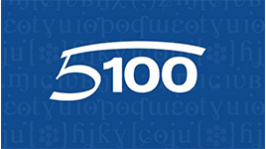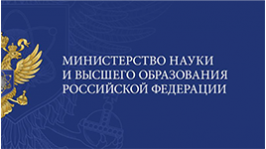Неэргодическая экономика
Авторский аналитический Интернет-журнал
Изучение широкого спектра проблем экономики
Статьи
В статье предпринимается попытка развития поликаузальной общей теории социального развития, в которой экономический рост зависит от четырех групп факторов: технологий, институтов, культуры и благосостояния. Для этого вводится в рассмотрение принцип согласованности, в соответствии с которым темпы экономического роста положительно зависят от высокой согласованности в уровне развития перечисленных четырех групп факторов. Данный принцип выступает в качестве важного элемента новой поликаузальной теории. Принципиально новое, вносимое принципом согласованности в экономическую теорию, состоит в том, что в соответствии с ним экономический рост зависит не только от уровня развития рассматриваемых четырех групп факторов, но и от степени синхронизации их совместной динамики.
27.03.2021
The article presents a simple model of economic growth based on the description of the dynamics of fixed capital formation. The main characteristic of the obtained fundamental equation of economic growth consists in an explicit link between the indicators of the GDP growth rate and the level of return on equity which allows not only obtaining the T. Piketty inequality, but also strictly determining the conditions for its implementation. The peculiarity of the fundamental equation of economic growth is in the postulation of the primacy of the capital circulation process which can provide an economic growth regime under certain conditions. The main difference between the author’s model and earlier constructions is the aggregation of most growth factors into one parameter. It is the profit rate (return on equity) which acts as the main driver of economic expansion. To strengthen the explanatory power of the fundamental equation of economic growth, the author considers two economic sectors – ordinary (with a low return on equity) and special (with a very high return on equity).
26.03.2021
С начала 2021 года в России действует прогрессивная шкала налога на доходы физических лиц (НДФЛ). Отныне россияне, зарабатывающие свыше 5 млн руб. в год, будут платить НДФЛ по ставке 15% вместо ранее установленных 13%, которые распространяются на всех остальных граждан. Этот шаг можно трактовать как вхождение России в клуб «цивилизованных» стран, в которых действует система прогрессивного подоходного налогообложения. Но что же означают для страны и бюджета эти пресловутые дополнительные два процентных пункта НДФЛ для состоятельных и богатых граждан?
12.03.2021
В 2020 году в издательстве «Эксмо» вышла очередная книга Ланы Барсуковой «Любовь и выборы». Насколько удалась эта книга? В чем ее «изюминка» и стоит ли ее читать? Можно ли соединить в книге политическую авантюру, детективную интригу, любовную линию и социальную сатиру? Насколько справедливы отзывы об этой книге известных критиков и писателей? Статья дает ответы на перечисленные вопросы.
03.03.2021
Статья посвящена дискуссионной проблеме целесообразности отказа в практике государственного управления от инструмента социального прогнозирования в пользу методов планирования и проектирования. Методологической основой исследования послужил концептуальный императив о невозможности адекватного прогнозирования в современном мире, поддерживаемый такими авторитетными исследователями, как Дуглас Норт, Джордж Сорос, Нассим Талеб и Арнольд Тойнби. Для иллюстрации справедливости данного тезиса был проведен сравнительный анализ, для чего рассмотрены основные группы факторов, ставящие под сомнение возможность и целесообразность сохранения инструмента социальной прогностики.
01.03.2021
В статье предложена простая модель экономического роста, основанная на описании динамики накопления основного капитала. Особенность полученного фундаментального уравнения экономического роста (ФУЭР) состоит в явной увязке показателей темпа роста ВВП и уровня рентабельности капитала, что позволяет не только получить неравенство Т. Пикетти, но и строго определить условия его выполнения. Своеобразие ФУЭР состоит в постулировании первичности процесса круговорота капитала, который при определенных условиях может обеспечить режим экономического роста.
28.02.2021
The article considers the influence of the complexity of the social system on the growth of financial costs for the maintenance of the central management system. The subject of the article is Professor Dmitry Sorokin’s theory that Russia cannot be a world technological leader due to objective reasons: a large territory, a severe climate, a multinational and multi–confessional composition of the population. These conditions predetermine a strong power vertical and increased financial costs, leading to the bureaucratic despotism and worse effectiveness of market innovation mechanisms. The relevance of the problem is in the need to clarify the management capabilities and limitations of regimes with strong centralized power. This issue is becoming more urgent due to the fact Wagner’s law, which requires faster growth of public expenditure compared to the economy, has ceased to operate. The article aims to theoretically illustrate and to test the theory by D. Sorokin. On this purpose, the authors built a simple theoretical model of economic growth with an institutional factor reflecting the properties of the control system.
08.02.2021
В статье рассматривается влияние сложности социальной системы на рост финансовых издержек на содержание системы центрального управления. Предметом статьи является концепция профессора Дмитрия Сорокина, согласно которой Россия не может быть мировым технологическим лидером из-за объективных особенностей: большой территории, тяжелого климата, многонационального и многоконфессионального состава населения. Данные обстоятельства предопределяют сильную вертикаль власти и повышенные финансовые затраты на нее, что приводит к деспотии бюрократии и ослаблению эффективности рыночных инновационных механизмов.
04.02.2021
Конкурентоспособность российских вузов на рынке глобального образования пока остается невысокой. Для исправления существующей ситуации в начале 2021 года правительство России одобрило программу стратегического академического лидерства «Приоритет–2030», которая направлена на поддержку вузов. Программа станет своеобразным продолжением завершившегося в прошлом году Проекта 5–100.
03.02.2021
В статье рассмотрен парадокс инновационной невосприимчивости (бесчувственности) российского производственного сектора, состоящий в осуществлении властями разнообразных и масштабных инициатив по ускорению технологической модернизации российской экономики с крайне низкой отдачей от них. Для иллюстрации указанного парадокса рассмотрена ретроспектива институциональных реформ в науке, высшем образовании и производственном секторе. Для более глубокого понимания неудач в области ускорения технологического прогресса выполнено сопряжение теории реформ и общей теории социального развития, что позволяет получить адекватный аналитический аппарат. Для этого разработана типология ошибок, осуществляемых в ходе реформы модернизации российской экономики.
15.01.2021












